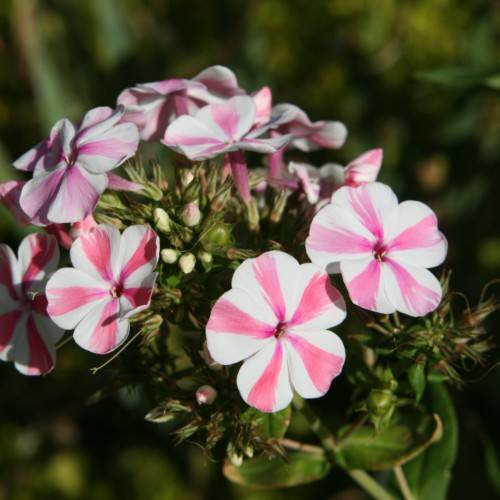
garden phlox
Phlox paniculata 'Candy Twist'
Also Known As - border phlox,common phlox,common phloxCycle:
Herbaceous Perennial
Watering:
Average
Hardiness Zone:
4 - 8
Flowers:
Flowers In Summer
Sun:
Full sun, Part sun/part shade
Soil:
Rocky , gravelly , dry, Well-drained
Fruits:
Fruits In Autumn Ready In Fall
Leaf:
Yes
Growth Rate:
High
Maintenance:
Moderate
Care Level:
Medium
watering
Garden phlox requires frequent, light watering. Water the plant at least once per week, more often if the weather is hot and dry. Make sure the soil is moist, but not soggy. Avoid over-watering, as this can cause root rot. To check if the plant needs watering, dig down 1–2 inches (2–5 cm) into the soil with your finger. If the soil feels dry, then it’s time to water. Water the plant from the top, close to its base, using a watering can. Once the soil is saturated, allow it to drain before replacing the container. Always check the soil periodically, as weather conditions can affect watering frequency.
sunlight
Garden phlox (Phlox paniculata 'Candy Twist') needs at least 6 hours of direct sunlight every day to thrive; partial shade is acceptable as well. This plant prefers to be in full sun during the morning and early afternoon hours and to be in partial shade during the late afternoon and evening hours. If garden phlox is not getting enough daylight, the plant may become frail and the colors of the blooms may fade. For optimal results, garden phlox should be planted in an area that receives full, bright sunlight for 6 hours or more each day.
pruning
Garden phlox requires regular pruning to keep it healthy and full of blooms. For optimal growth and appearance, it is best to prune your garden phlox when it is done flowering in late summer or early fall. Begin by pruning off any of the old flower heads and then removing any thin or diseased stems. You can safely remove up to 1-third of the plant's total stems without damaging the plant. Be sure to make your cuts just above the existing buds on the stems to encourage additional branching and new flower growth. You can also cut the plant back a second time during the late winter or early spring once any new growth has emerged. This pruning session can be more aggressive and cut the overall plant back by up to 2-thirds, although take care to not remove any of the new green growth. By following these pruning tips, you will help your garden phlox thrive and enjoy beautiful blooms throughout the season.
